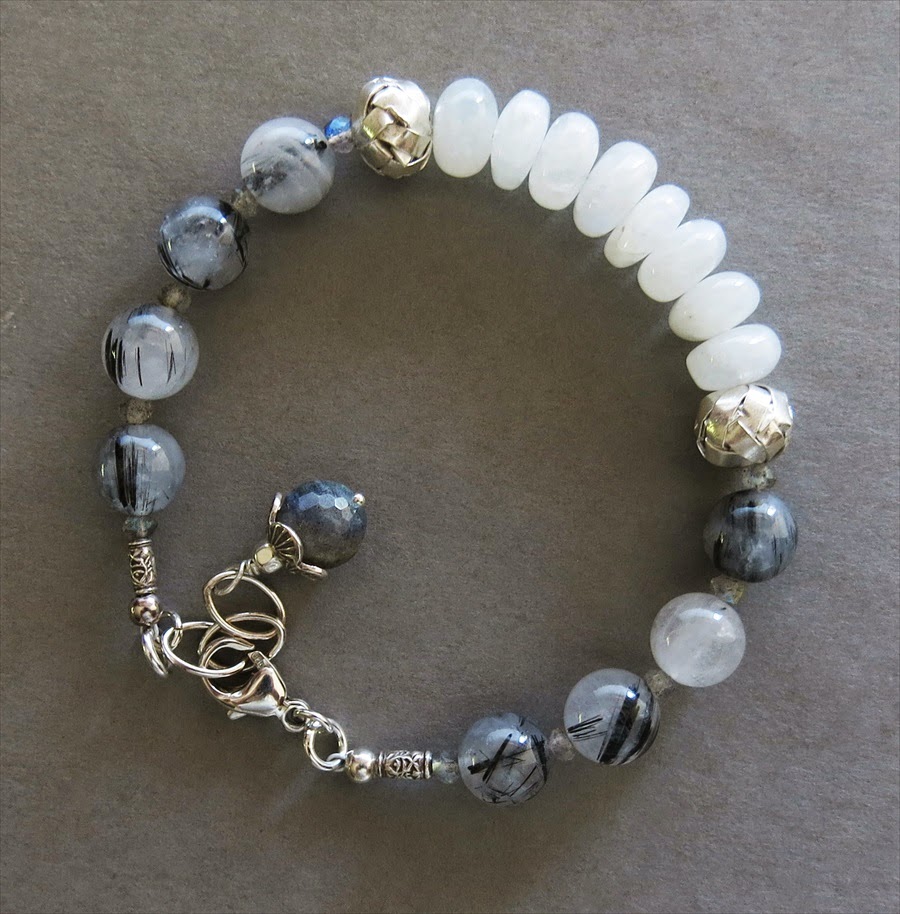Moonstones are fascinating gemstones. I love the way they shimmer and flash. Like many of the other chatoyant and changeable gemstones they have a quality that is magical and fun. They surprise us.
There is quite a bit of folklore surrounding moonstones. One belief is that if a man gives a woman a moonstone necklace under a full moon the couple will experience intense passion together forever. The moonstone is also thought to bring good fortune, bring success in business and in love, to be protective and enhance intuition. Various cultures gave varying qualities to moonstone. One of my favorites is from Asia, where the moonstone gem was considered to be a ray of solidified moonlight with a good spirit living inside the stone. This is beginning to sound like a very benevolent gemstone.
According to one source, moonstone was originally mined from an old mining site at Mt. Adular in Switzerland. From this came the term "adularescence", the optical iridescence which creates the light in moonstone. Adularescence is due to refraction of light as it hits the thin, alternating layers of minerals within the gem. The thin layers produce the blue flash or "schiller" and thicker layers produce white shimmering. The different body colors of various specimens is generally due to the presence of iron or other minerals.
Moonstones are among a few gemstones that have inclusions or stress cracks so unique that their presence guarantees the identity of the stone. These Inclusions aligned with smaller inclusions in a particular pattern are called "centipedes" and identify the gems as moonstones.
There are a couple of types of moonstones. The classical moonstones are almost transparent and have an amazing blue flash. They're found in Sri Lanka as well as the USA, Madagascar and Brazil, among other places. The bluish moonstones are in high demand and have become quite expensive. They are commonly referred to as blue flash moonstones, sometimes as rainbow moonstones, and some experts draw a clear distinction between the two. Specimens from India are more opaque and display cloud like plays of light and shade and tend to be in shades of gray, peach and white. Rather than have a flash, they have more of a glow or a shimmer. They are less expensive than the transparent moonstones, but good quality moonstones are always pricy.
Moonstones are in the feldspar family of gemstones. They are not hard, with a hardness of 6 on the Mohs scale with 10 being the hardest. Be they transparent and flashy, or more opaque and glowing, moonstones are enchanting, feminine and delicate. They bring us the sweetness of the moon with all its changeability and fascination. They bring a sparkle as well as a dreaminess to any piece of jewelry, and bring us their wonderful benevolent energy.


Comments
Post new comment